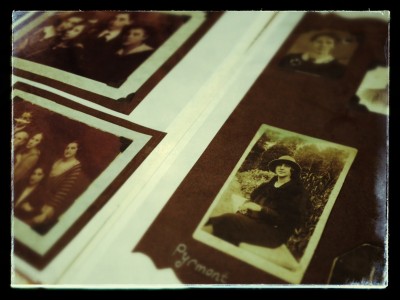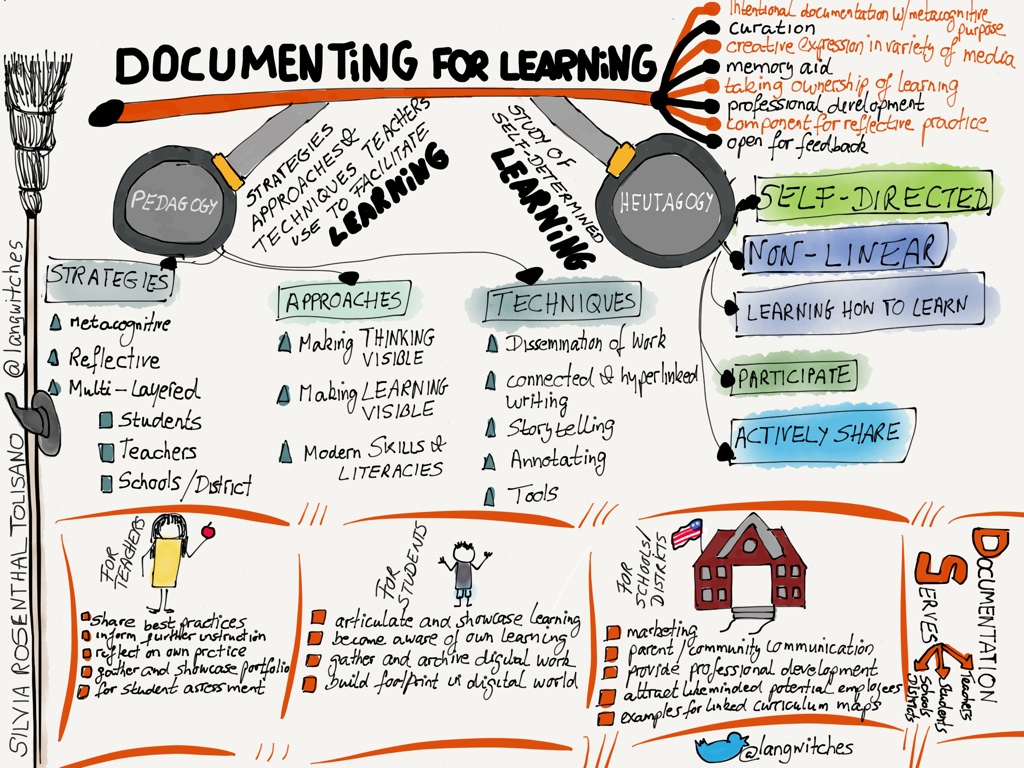Documenting FOR Learning

I am a documenter, I have always been… maybe it is in my blood…
…from keeping diaries from an early age on, being the family letter writer, to taking pictures to document our lives, vacations, family and friends… even when it was tedious… (taking 24 or 36 exposures at a time, then taking it to a photo store to develop them and waiting a week to being able to pick them up).
I am the family historian, creating family albums, chasing and writing down family tree connections….I am the storyteller… repeating family stories… so my children and grandchild(ren) will know where they came from…to not let voices of the past quiet down and disappear…
…so maybe it is in MY blood…but… even if it is not in YOUR blood… as an educator… take another look at the purpose and effect of documenting FOR learning…in my opinion, documenting serves a larger…big picture purpose in education…
Documenting FOR Learning is:
- a supporting piece for the study of self-determined learning–> Heutagogy
- a strategy, approach and technique to facilitate learning–> Pedagogy
I see documenting as:

- a process of intentional documenting serves a metacognitive purpose
- a creative multimedia expression (oral, visual, textual)
- a component of reflective practice
- taking ownership of one’s learning
- a memory aid
- curation
- professional development
- being open for feedback
While I have, until now, primarily seen and used documentation for my own and other’s professional learning by documenting student learning and learning/teaching strategies, one of the take-aways from a workshop I attended recently with Ben Mardell, Making Learning Visible, was that documenting student learning in the classroom is an integral component to inform the direction further instruction and content is to take.
Tools and ideas to transform education. Sign up below.
Intentional educational documenting is multi-layered and can serve teachers, students and schools/districts:
- Teachersto share best practices with colleaguesto make teaching available for students outside of classroom hoursto inform further instructionsto reflect on their own lesson plans, delivery and teaching pedagogyto gather and showcase their teaching portfolio over timeto evaluate student progress, growth and for assessment
- Studentsto articulate (via different forms of media) and showcase their learningto become aware of their own learning growthto gather and archive their digital work via E- portfoliosto build their footprint in a digital world
- Schools/ Districtto a certain degree in their marketing effortsin parent / community communicationto attract like minded potential employeesto provide Professional Developmentprovide documentation and examples to linked curriculum maps
I use the following types of tools for documenting:
- Video
- Photos
- Sketchnotes
- Notes (traditional/annotated)
- Tweets
- Backchannel
- Blogs
- Slide deck
- Screenshooting and – casting
- Mindmaps
A very interesting article, titled Pedagogical Documentation (pdf) from the Ontario’s Capacity Building Series by The Student Achievement Division supports the notion that pedagogical documentation helps students take ownership of their learning, challenges teachers to
“see children differently. Different kinds of demonstrations of learning moved us all beyond what we had come to expect, and led us to a place of valuing each child’s contribution. What was made visible was the learning process of children , their multiple languages, and the strategies used by each child.”
When googling “pedagogical documentation“, many hits are returned regarding the Reggio Emilia teaching approach in early childhood.
In Reggio Emilia, teachers make records of events in the life of the school as a tool for research. This has come to be known as ‘pedagogical documentation’ because of the important role it has in supporting reflective practice. (Dahlberg et all. 1999: 144). Pedagogical documentation consists of records that are made for the purpose of pedagogical research.
Pedagogical documentation could be described as visible records (written notes, photos, videos, audio recordings, children’s work) that enable teachers, parents and children to discuss, interpret and reflect upon what is happening from their various points of view, and to make choices about the best way to proceed, believing that rather than being an unquestionable truth, there are many possibilities.
Beyond the benefits in early childhood, I did not find much in regards to Documenting for Learning with older students (K-16) and adult learners as part of their professional development.
What are your thoughts? What type of research have you come across? Have you conducted action research in your own classroom? With your PD? What are the benefits/disadvantages? Should documenting have an “official place” in our overall learning toolbox? Should documenting be part of every work-and learnflow?
cross posted at langwitches.org/blog
Silvia Tolisano is a Curriculum21 faculty member, author of the book Digital Storytelling Tools for Educators and founder of the Around the World with 80 Schools project. Read more at http://langwitches.org/blog.
